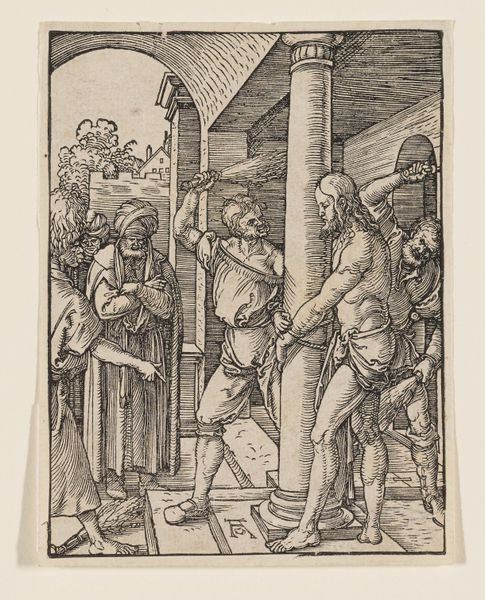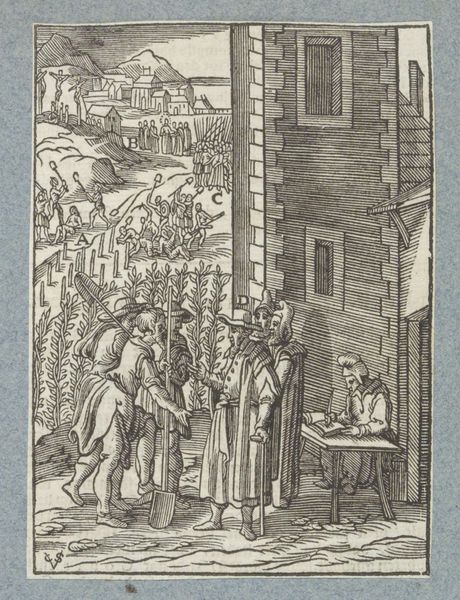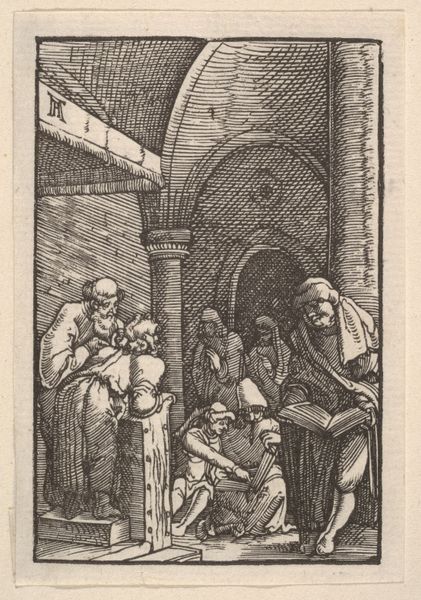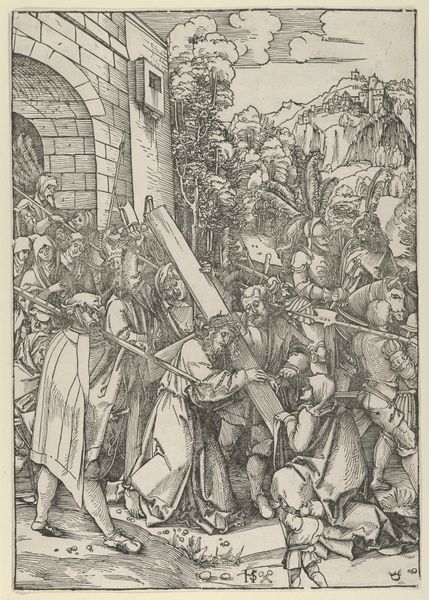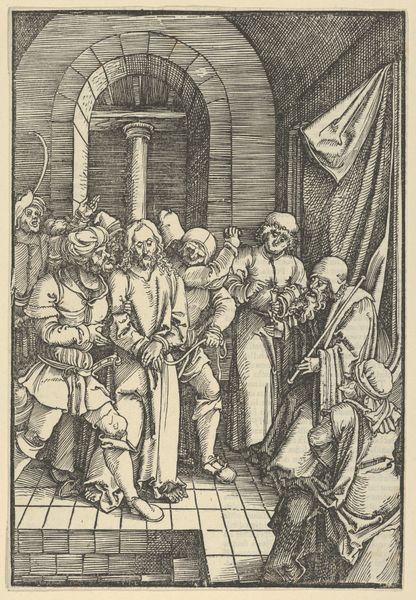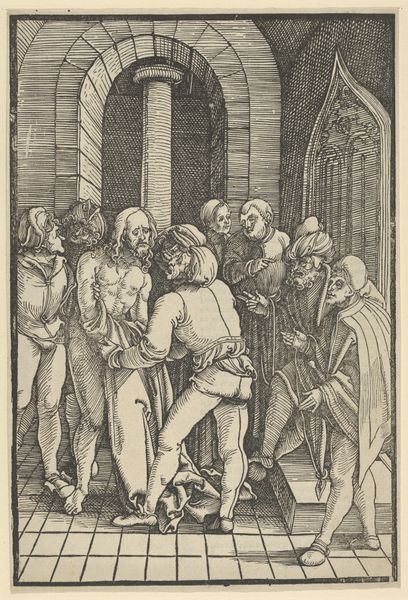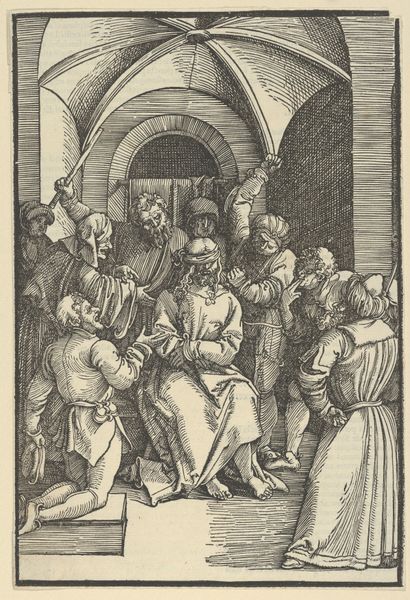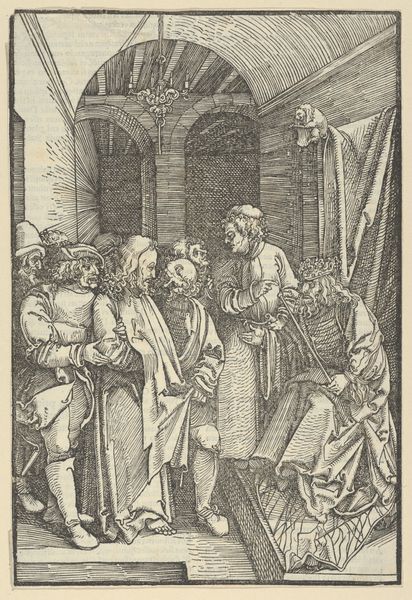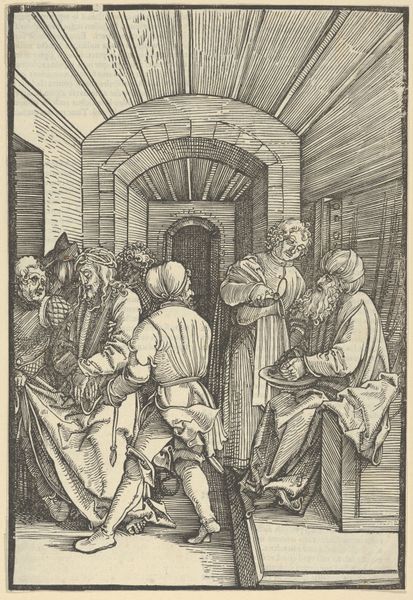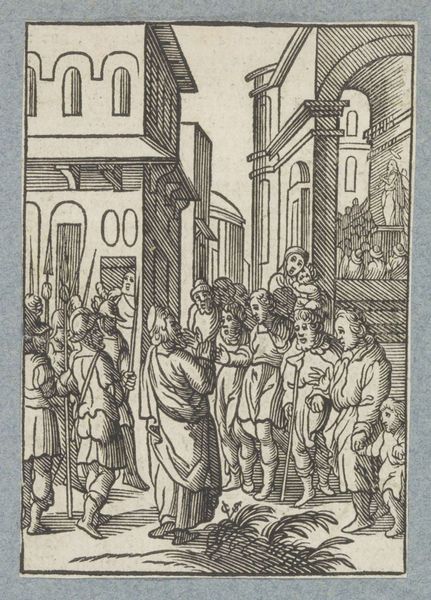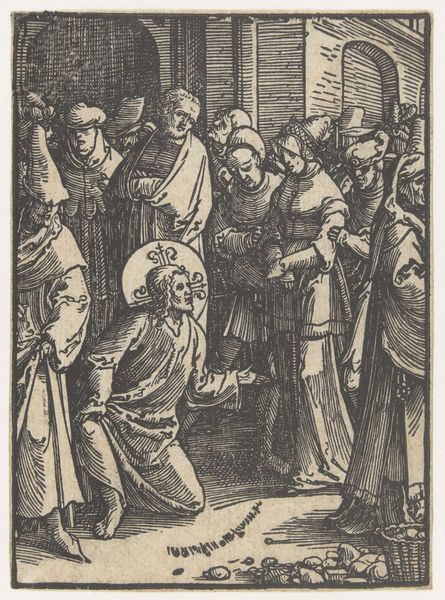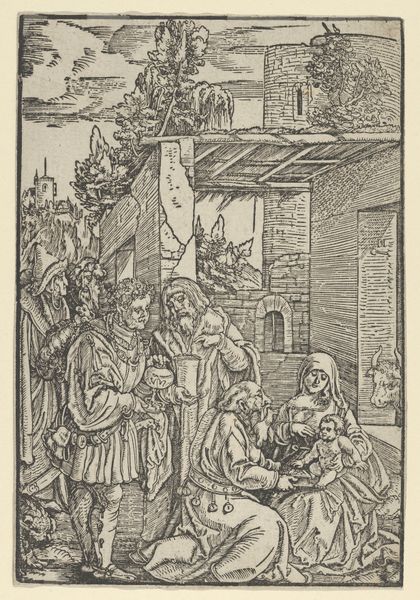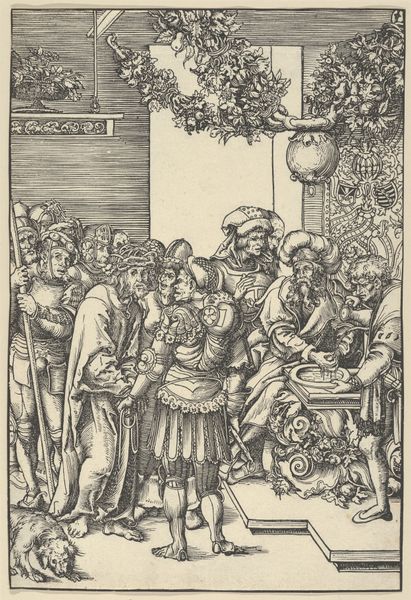
Christ before Pilate in front of his Palace, from Speculum passionis domini nostri Ihesu Christi 1507
0:00
0:00
drawing, print, woodcut
#
drawing
# print
#
figuration
#
woodcut
#
history-painting
#
northern-renaissance
#
christ
Dimensions: Sheet: 9 3/8 × 6 3/8 in. (23.8 × 16.2 cm)
Copyright: Public Domain
Curator: This striking woodcut, created around 1507 by Hans Schäufelein, depicts "Christ before Pilate in front of his Palace," and it's part of the Speculum passionis domini nostri Ihesu Christi. It is currently housed at the Metropolitan Museum of Art. Editor: My first impression is that it’s really stark. The high contrast lends a tense and ominous feel to the whole scene, doesn't it? There's a lot of nervous energy suggested, too. Curator: Absolutely. The composition emphasizes that tension. Christ, so still and central, is framed by a crowd of accusers whose faces and gestures seem exaggerated. Consider, too, the architecture looming in the background, perhaps mirroring the forces closing in on him. We're dealing with cultural symbols of divine injustice here. Editor: And let’s not overlook that this is a woodcut—the medium itself is key. Carving into wood, especially with such sharp, angular lines, demanded tremendous skill. It speaks to the labour involved in disseminating religious imagery to a wider audience in the 16th century. We're not just talking about passive consumption but the active hand behind its production. Curator: True, the material process impacts our perception. The linear patterns and textures convey both depth and emotional impact. It reminds us of the long tradition of religious imagery functioning as tools of persuasion and instruction within particular socio-historical settings. It reminds the viewer of the tradition and narrative behind the art itself. Editor: Exactly! These prints weren't displayed as individual artworks, right? They were bound into books, circulating not just as "art," but as consumable commodities with specific ideological purposes. We might want to explore its broader influence and legacy, as it's not just about the immediate image but its extended life. Curator: I appreciate that reminder to contextualize these pieces. Looking again at the image now, the print's ability to connect visual and textual experience deepens the devotional impact, linking viewers through a shared symbolic visual and religious vocabulary. Editor: Well, by analyzing the artistic production and social consumption, we gain so much insight. It challenges the typical notions of what is historically considered ‘high art’ versus devotional material. Curator: Agreed. It opens doors for thinking about its impact through cultural memory. Editor: Exactly. The details are simply remarkable.
Comments
No comments
Be the first to comment and join the conversation on the ultimate creative platform.
